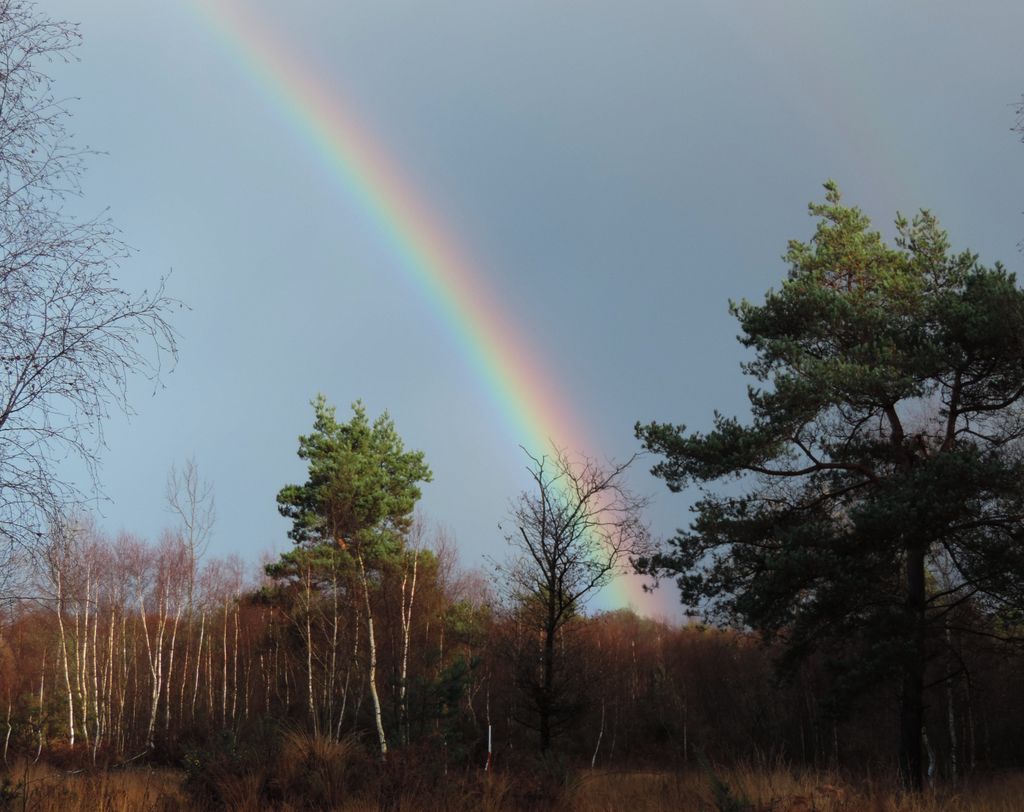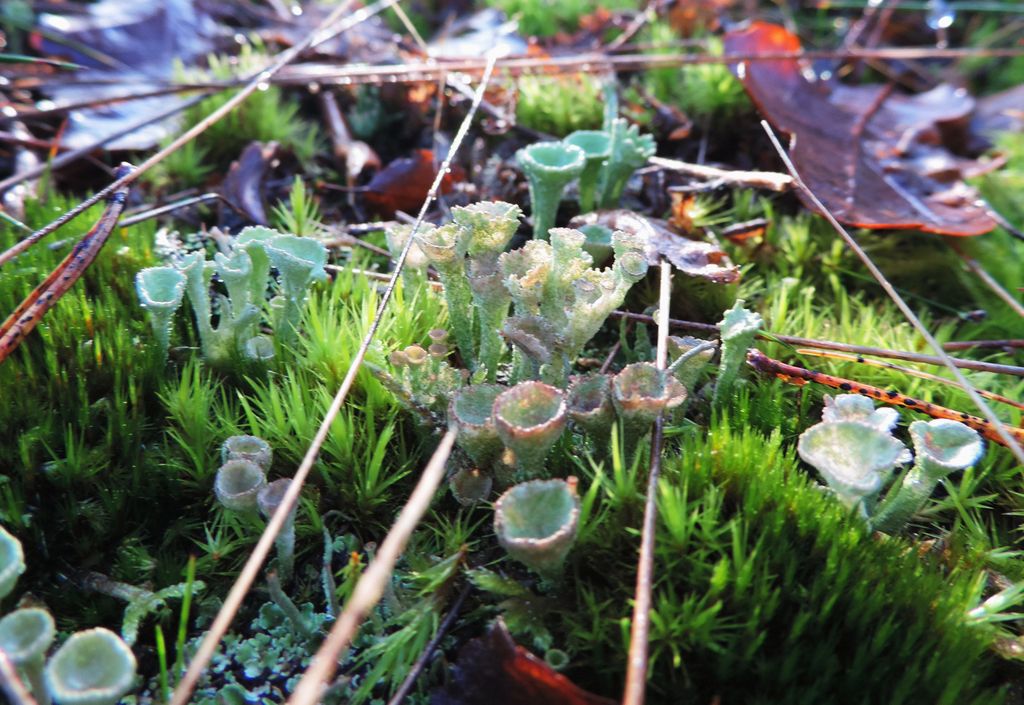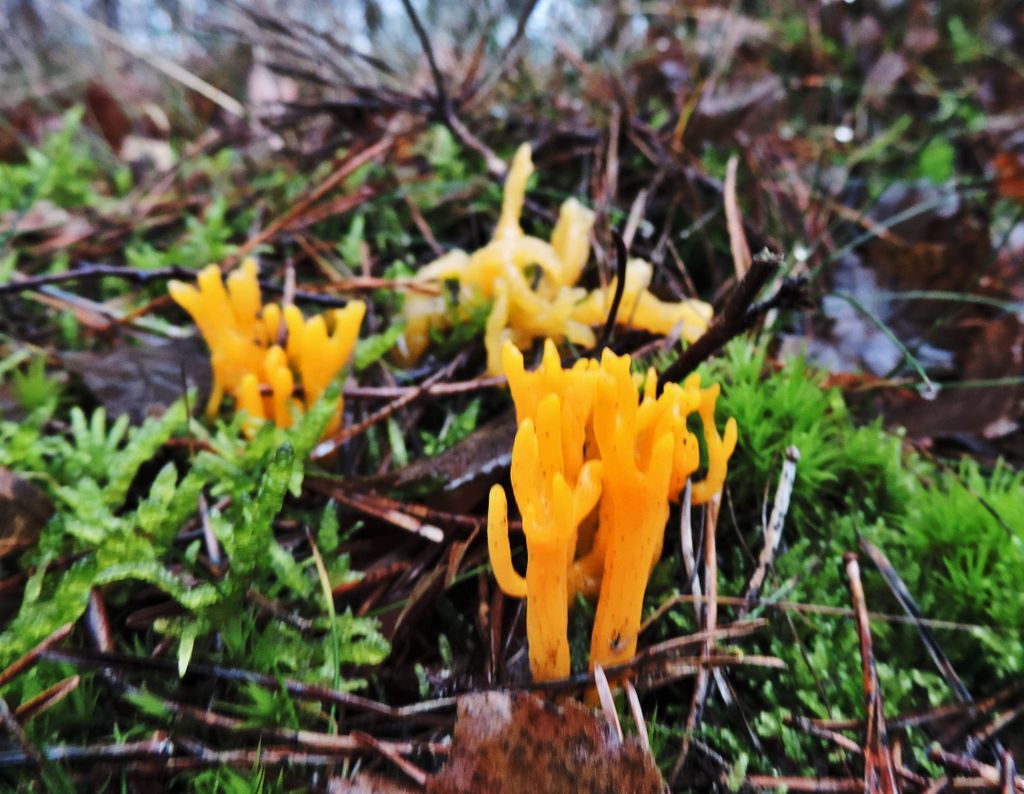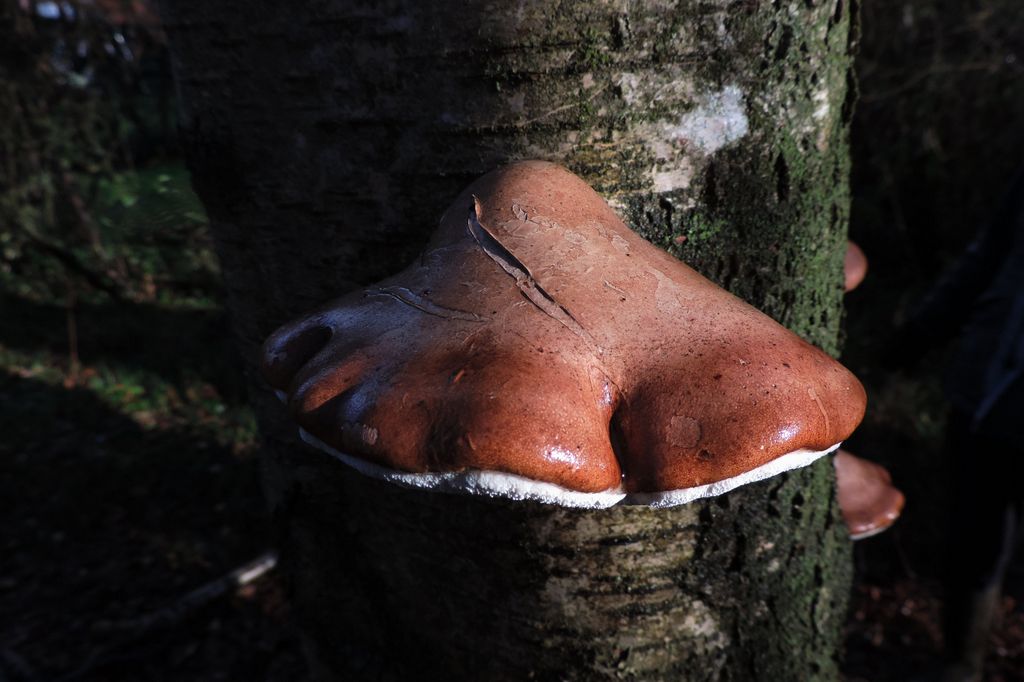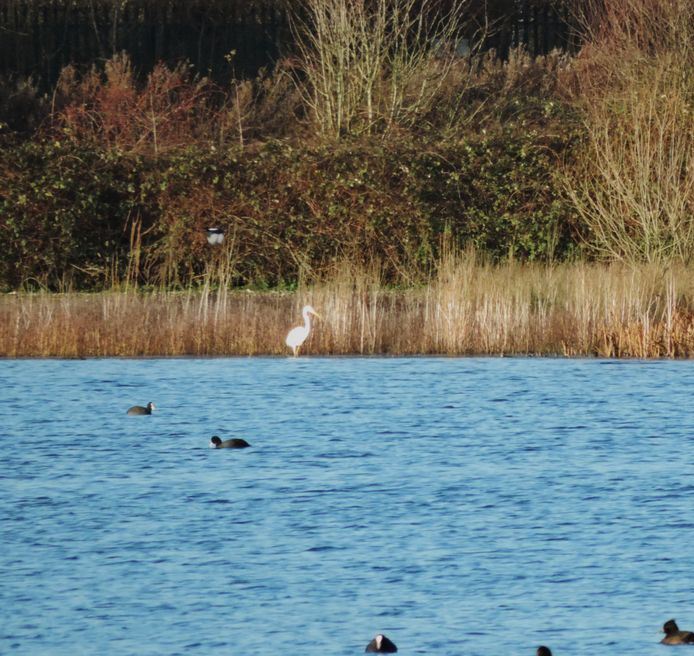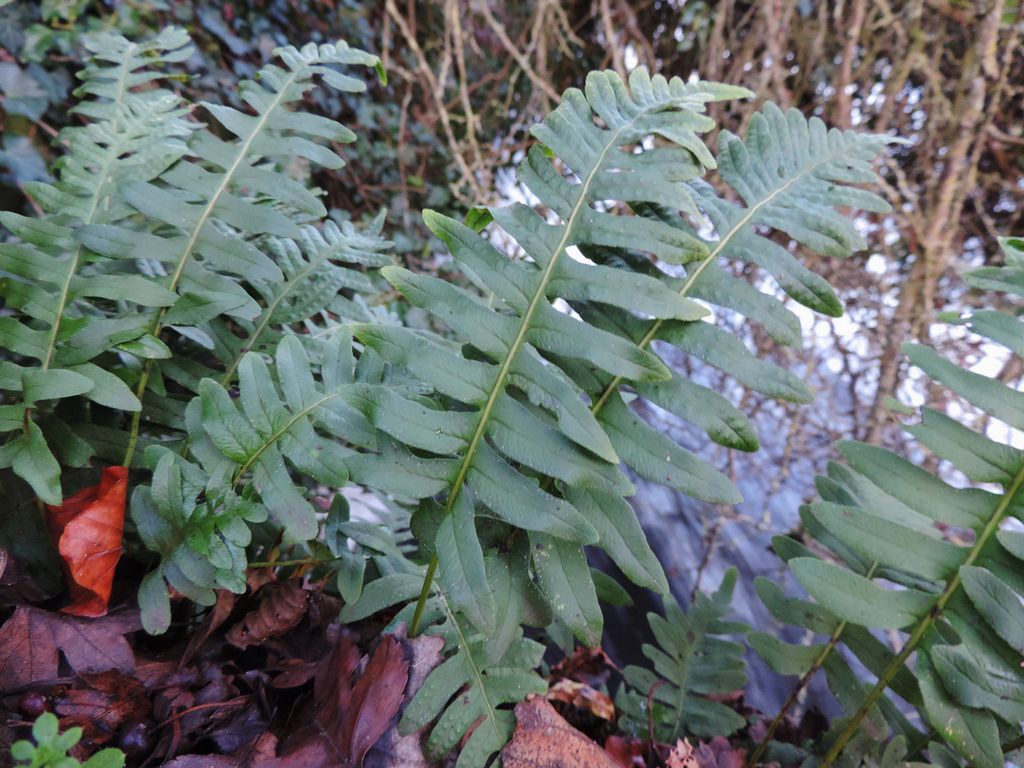On Tuesday 15 December, Rob Stallard led two circular walks, one in the morning and one in the afternoon, each with five participants. They started from the car park at Padworth Common, on a mild day with intermittent sunshine and the occasional shower. The afternoon walkers started out in a light shower, but were compensated soon after by a double rainbow. The Heather had long finished flowering, but there were still a few pale pink flowers on the Cross-leaved Heath plants. Creeping Willow was found on the open heathland, Pixie-cup Lichens were abundant and there were a few clumps of the Yellow Stagshorn fungus. The footpath led across a busy road and onto the southern section of the Common, turning eastwards to follow the southern boundary of the reserve. The Common is dotted with Silver Birch trees, a few of which sprouted ladders of the Birch Polypore fungus. Amongst the birches were a number of Aspens, with smooth dark grey trunks and shiny brown pointed buds. The drainage ditch along the edge of the reserve was brimming full, overflowing in places to flood sections of the track. After re-crossing the road, the route continued northwards, following a track which led through farmland to the edge of a wooded area. The track crossed a small stream, then climbed to the wide bank and ditch of Grim’s Bank, before following the high metal fence of the oil storage depot. Sightings beside the track included tall Common Figwort plants, and Dog’s Mercury and Rough Chervil in flower. The next footpath led across a grassy field towards Old Farm. A few Redwings and Fieldfares perched in the tops of nearby Ash trees. The roof and tall chimneys of Ufton Court could be seen emerging above the woodland to the east. Continuing through the farmyard, wide views opened up across the Kennet valley, with the grey buildings of Englefield House visible in the distance. Flowers in the farmyard included Red and White Dead-nettle, Scentless Mayweed, Common Field-speedwell and Groundsel. The next track descended north-westwards, with changes in gradient marking out a series of gravel terraces. A short stretch of road, where Black Horehound still had a few flowers, led to a bridge over the River Kennet, which was flowing fast and full. The walk continued south-westwards along a footpath which ran between the river and a large gravel pit, where Great Crested Grebe, Little Grebe, Gadwall, Wigeon, Tufted Duck, Coot, Cormorant and Swans were seen. A Great White Egret shone white on the far bank of the lake, identifiable by its large size, massive yellow beak and yellow legs. Apparently it had been recorded from the same location a few days previously. A Moorhen swam jerkily across the river and a flock of Canada Geese were grazing in the fields to the south of the river. The path led to Padworth Mill. Rob informed the group that the first records of the mill date back to 956. By the time of Domesday Book, there were three mills here, one of which was a fulling mill. The next footpath led southwards, re-crossing the Kennet and a series of mill leats, one of which now accommodates a salmon ladder. Common Polypody fern flourished on some of the bridges. The footpath continued south-eastwards across the fields and up to Padworth Church. This is a small Norman building, dating back to 1130, with a rounded apse and decorated arches above the south and north doorways. A big old Yew stands in front of the church and a clump of flowering Primroses was found in the churchyard. The route back led across fields, and then south along Rectory Road where a large flock of Starlings with intermingled Linnets landed on telephone wires. Two Roe does and a fawn were seen in a nearby field. Finally, ivory-white Snowy Waxcaps and a small orange waxcap were spotted on a closely-mown mossy lawn adjoining the Common.
Pictures by Rob Stallard

